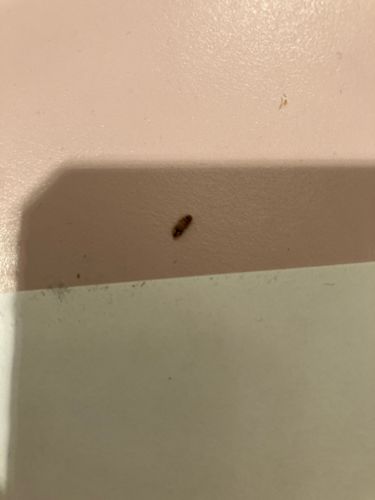Carpet Beetle (Larva)
Scientific Name: Anthrenus (various species), Attagenus (various species)
Order & Family: Coleoptera, Dermestidae
Size: 2-5mm for larvae

Natural Habitat
Indoors in homes, museums, warehouses; particularly in dark, undisturbed areas like under carpets, furniture, in closets, or attics. They feed on natural fibers.
Diet & Feeding
The larvae feed on a wide variety of animal-derived products and natural fibers, including wool, silk, fur, feathers, leather, pet hair, dried meat, dead insects, and even some plant-based materials like cereals and spices.
Behavior Patterns
Carpet beetle larvae are typically slow-moving and avoid light. They undergo several instars (molts) as they grow, and their larval stage can last from several months to a year, depending on environmental conditions and food availability. Adults are winged and can fly, often found near windows as they are attracted to light.
Risks & Benefits
Potential Risks: Carpet beetle larvae are considered pests as they can cause significant damage to household items made of natural fibers, such as carpets, clothing, upholstery, and stored foods. They do not bite or transmit diseases to humans but can cause skin irritation or allergic reactions in some sensitive individuals from their bristly hairs. Potential Benefits: In outdoor environments, some species contribute to decomposition by feeding on dead animals and insects.
Identified on: 10/3/2025